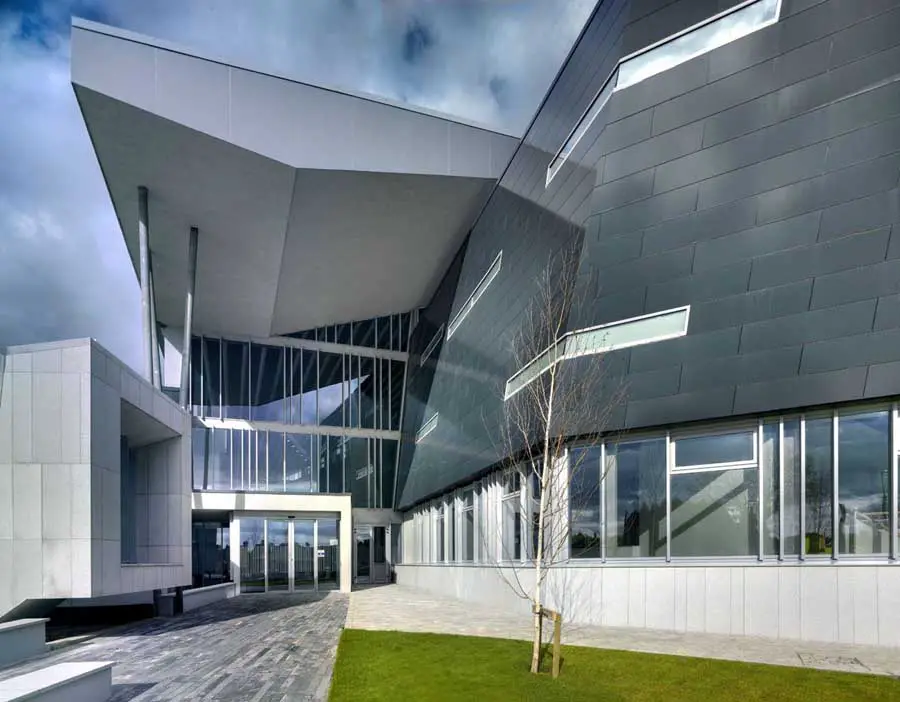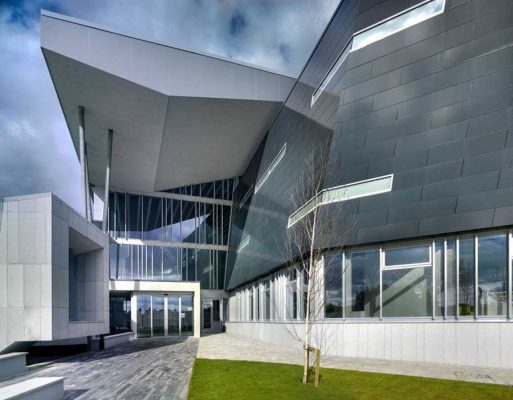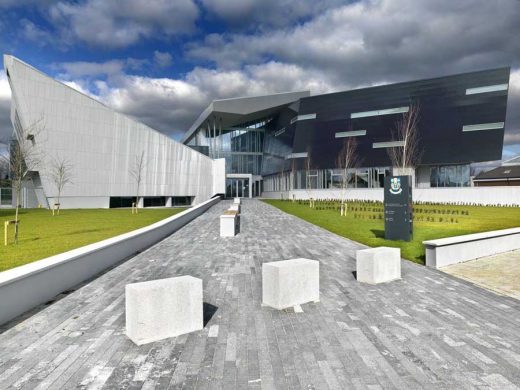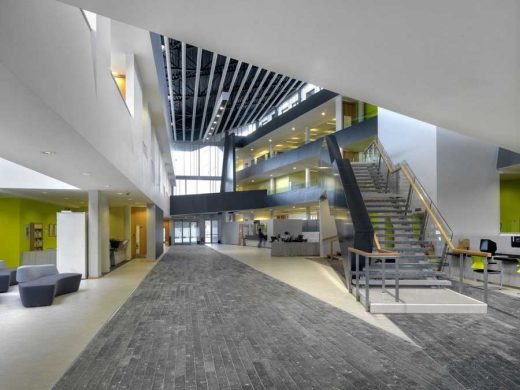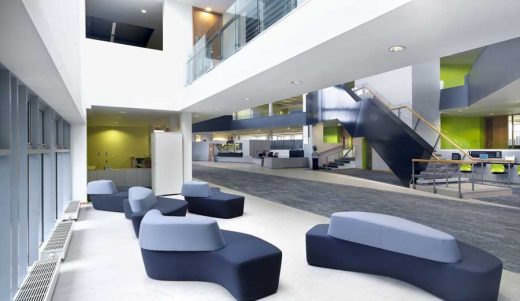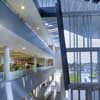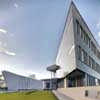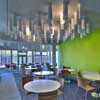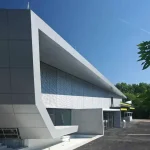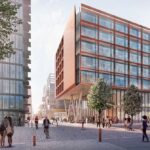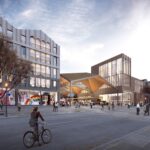Clare County Council Headquarters Ennis building, Irish HQ Project Photos, News, Design, Images
Clare County Council HQ, Ennis
Local Government Development design by Henry J Lyons Architects in Ireland
post updated 20 May 2025
New Corporate Headquarters for Clare County Council
Location: Ennis, Co. Clare
Design: Henry J Lyons Architects
Architect’s statement
Áras Contae an Chláir
26 April 2010
Áras Contae an Chláir
The site, a long established base for Clare County Council, raises the challenge of inserting a large structure into this low rise, low density context. Set back from New Road, the dramatic shape of the stone clad Council Chamber and the sharp inclined south wall of the main office block frame the front landscaped plaza forming a new civic space for Ennis.
The new headquarters for Clare County Council provide 8,600 sqm of offices for ca. 300 staff, configured around a public concourse, as well as meeting rooms, staff canteen, a laboratory, Council Chamber and 320 car parking spaces.
The building takes the form of a 4-storey spine block of office accommodation running north/south in the centre of the site, at the furthest point from the surrounding houses. To the west and perpendicular to the spine, three pavilions sit in a landscaped park with gardens separating each block. The building reduces in height and mass as it stretches towards the dense existing tree lined boundaries, respecting the privacy and amenity of the adjoining residences.
The public concourse generates the heart of the scheme, accommodating the public interface with the various departments, and is traversed by bridges linking the open workspaces above. The atrium is also essential to the natural ventilation strategy, utilizing stack effect and wind pressure differentials for ventilation and space cooling purposes.
Our proposal attempts to reinterpret some of the rough character of the unique Burren landscape, the weighty architecture of dolmens on a surface of sharp irregular limestone with intermittent splashes of green vegetation.
Sustainability
The building was conceived to provide naturally ventilated workspaces with optimal daylight and minimal glare, delivered through a finely tuned envelope that responds to orientation, minimizing unwanted heat gain.
Several CFD simulations were run to establish which areas were not suitable for natural ventilation. These areas – Council Chamber suite, internal meeting rooms, the laboratory and the communications room were provided with mechanical ventilation.
The services strategy to significantly reduce energy consumption and optimize the long-term sustainability of the building included the following:
– Natural Ventilation controlled by a BMS.
– Increased levels of thermal insulation to exceed those required by the building regulations.
– Woodchip LPHW boiler providing 60% of connected load.
– Variable speed pumps on the LPHW heating system and the atrium under-floor heating system.
– Solar Vacuum Panels split over 12 decentralized systems providing 55% of the annual domestic hot water load.
– Domestic hot water pipework trace heating maintenance tape.
– Ventilation heat recovery on the mechanically ventilated spaces (council chamber, laboratory, toilets, etc).
– Variable speed fans on the council chamber suite supply and extract ventilation systems.
– Energy efficient usage of lighting systems through presence and light level detectors
– Energy efficient fluorescent lighting (T5)
– Exposed concrete structure to absorb radiant heat during the working day and release the absorbed heat overnight. Suspended ceilings were avoided except where specifically required.
– Use of GGBS fairfaced concrete to reduce environmental impact and maintenance costs
– Rain screen panels manufactured by renewable certified rest wood and paper impregnated by thermosetting resins
– Carpets, furniture and chairs were chosen prioritizing the recycling and sustainability policies of the suppliers
– Permeable paving in the car parking area to reduce the impact of paved surfaces
– Use of renewable certified timber for doors and partitions.
– Concrete structural materials from the original buildings were recycled as sub base and drainage layer materials for the new development
Áras Contae an Chláir / Clare County Council Headquarters – Building Information
Location: New Road, Ennis (Co. Clare)
Client: Clare County Council
Architect
Henry J Lyons Architects, Dublin
Derek Byrne (Director)
Roldan Jacoby (Associate / Project Architect)
Enda Cavanagh (Architectural Technologist)
Andres Geoghegan (Fit Out)
Collaborators: Eoghan Fagan, Barry O’Riordan, Oleg Eremin, Linda Brady, Mercedes Troiano, Jeremy Dunlop, Rodrigo Perez Browne, Mark McDonald, Tony Soares
Photography © Enda Cavanagh
Competition: Jun 2004
Construction: Jun 2006 – Jan 2008
Budget: € 23M
Structural Engineer: O’Connor Sutton Cronin, Galway
M&E Consultant: RN Murphy Consulting Engineers, Dublin
Contractor: Michael McNamara & Co, Galway
Fit-out Contractor: Bob Bushell, Dublin
Clare County Council Headquarters images / information from Henry J Lyons Architects
Location: Clare County, Ireland
Irish Architecture Designs
Contemporary Architecture in Ireland
Irish Architectural Designs – chronological list
DeValera Library & Súil Art Gallery, Ennis, County Clare, Republic of Ireland
Clare County Library, Ennis, Co. Clare, Republic of Ireland
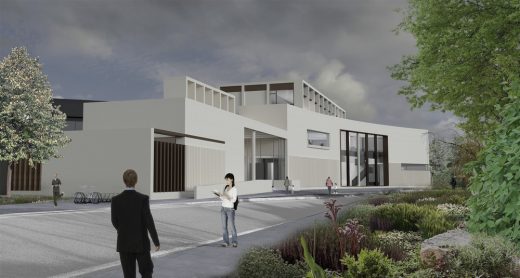
images courtesy of architects
Clare County Library in Ennis Building
Contemporary Irish Office Buildings Selection
The Sixth Belfast Office Building
Design: Allford Hall Monaghan Morris Architects (AHMM)
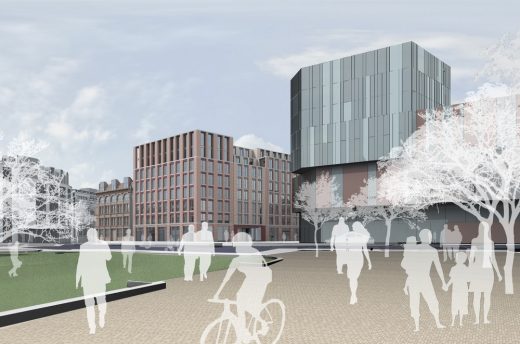
image courtesy of architects
Kildare County Council Offices
Design: heneghan.peng.architects in association with Arthur Gibney & Partners
Kildare Civic Offices
Wexford County Council – New Headquarters
Robin Lee Architecture
Wexford County Council HQ
Comments / photos for the Clare County Council Headquarters – Irish Architecture page welcome

